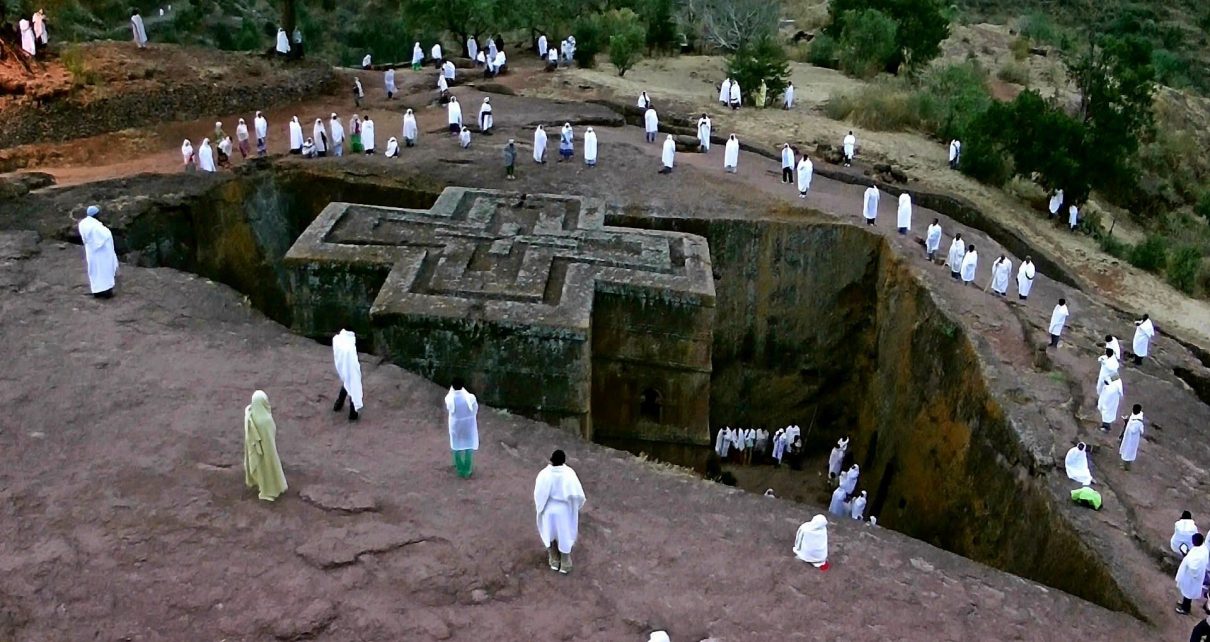Last week’s article, on ‘Enbaqom of Debra Libanos, was inspired by an important literary event in Ethiopian studies: the publication by Tsehai Publishers in Hollywood, California, of Paul Stenhouse’s English translation of the FUTUH AL-HABASHA, or 16th. century “Conquest of Abyssinia”.
This interesting work was written in Arabic by a Yemeni scholar, Shihab ad-din Ahmed bin ‘Abd al-Qader bin Salem bin ‘Utman bin ‘Uthman, also known, more simply, as ‘Arab Faqih. He was, you will recall, the historian of the notable Adal leader Imam Ahmed ibn Ibrahim, better known as Ahmed Gragn, or the Left-handed, who overran much of southern, central and northern Ethiopia in the early sixteenth century.
Really Left-handed
And it is worthy of note that Imam Ahmed was in fact truly left-handed (and in no way a term of abuse), as the FUTUH AL-HABASHA makes perfectly clear.
Last week we used the occasion of this new publication to re-tell the story of ‘Enbaqom, an Arab immigrant to Ethiopia of probably Yemeni origin, who was converted from Islam to Christianity, and rose to the position of Abbot of the all-important Ethiopian monastery of Debra Libanos – a dramatic move which shows how a foreigner could be accepted unreservedly into the Ethiopian Church. And, perhaps even more importantly, we saw that ‘Enbaqom translated a number of Arabic texts into the Ethiopian classical language Ge’ez, and emerged as one of sixteenth century Ethiopia’s greatest and most productive scholars. He earned a place of honour in the Ethiopian synaxarium, or Lives of Saints.

A Sixteenth century Polemic
We saw too that ‘Enbaqom exchanged correspondence with Imam Ahmed, arguing that Islam had a base in Christianity, and urging that the Adal armies should respect Ethiopian churches. We saw too that when he failed to bring the Imam round to his point of view he later wrote a polemical work in Ge’ez, which is still extant: a classic, in its way, of sixteenth century Ethiopian literature.
This brings us to the question for today: Did the Imam, in his campaigns, ever reach Lalibela?
Did the Imam reach Lalibela?
We can only answer on the basis the known text of the FUTUH AL-HABASHA – for we have no other available source. Even that is slightly problematic in that it tells the story only up to the Imam’s journey to the Lake Tana area in 1537, i.e. four years before the intervention of the Portuguese on the Imperial side, and six years before Gragn’s death. The text stops there, and we have no means of telling whether any continuation was ever written. It is, however, doubtful whether the Imam would have returned to the Lalibela area after the time described in the existing text of the FUTUH.
We can therefore probably restrict ourselves to the question of Lalibela as indicated in that text, now available in the Stenhouse translation, for which you should approach the publishers, at: info@tsehaipublisher.com

Two Lalibelas
The FUTUH tells of two places called Lalibela. The first, which need not at this moment concern us unduly, was in Fatagar, in the south-east of the country, and not so far removed from Mount Zuqwala.
The second Lalibela, which interests us today, was the currently more renowned Lalibela in Lasta: the site of the famous rock-hewn churches.
About this second Lalibela the text recalls that the Adal army (well before the time of the “Enbaqom correspondence) entered the Amhara area. This area it describes as “a region of flat arable land, standing crops, rivers and copious rain, of wheat and barley”. In it, we are told, were “scribes (presumably debteras), priests and monks”. It was moreover reportedly “the residence of kings… though the king does not reside there permanently”.
The FUTUH then proceeds to refer to a battle which the Imam fought in the Amhara area, and continues by stating that on the third day after the engagement the Imam and his men “passed the night in a place called Lalibela where the water was so frozen that some Muslims perished from the cold. When somebody wanted to drink”, the text adds, “he had to stab the ice with an iron pick and smash it to get the last drop of water”.
The FUTUH later reports that the Imam and his army assembled “near a church called Lalibela”, after which they “set out into the mountains, by a difficult route, to attack”. They marched, we are told, by night, and “some of their number died from the piercing cold before he reached the church”.
On reaching this church, Ahmed “found its monks there, milling around and willing to die for its sake. The Imam”, according to the FUTUH, then “gazed at the church. He had never seen its like. It was carved out of the mountain. Its pillars were likewise cut from the mountain… It had a large water cistern carved out of the mountainside”.

A Stone’s Throw of Each Other
The above is undoubtedly a fair description of an Ethiopian rock-church, as seen for example at Lalibela. But what is special about Lalibela (as every tourist knows) is that it is the site of eleven or so rock churches, not just one – and they are all within more or less a stone’s throw of each other!
We are therefore left with the question: Did the Imam actually reach Lalibela? Did he see only one church, and somehow miss the other adjacent ones? Was he deceived by his guides, and taken only to the one described above? Was the supposed Lalibela church seen by the Imam in fact an entirely different building? Or did his scribe, the illustrious ‘Arab-Faqih, for some reason or other fail to mention the other churches – most of which were no less remarkable than that the single one referred to in the above-cited text.
These are questions on which I, for one, can only wonder.





